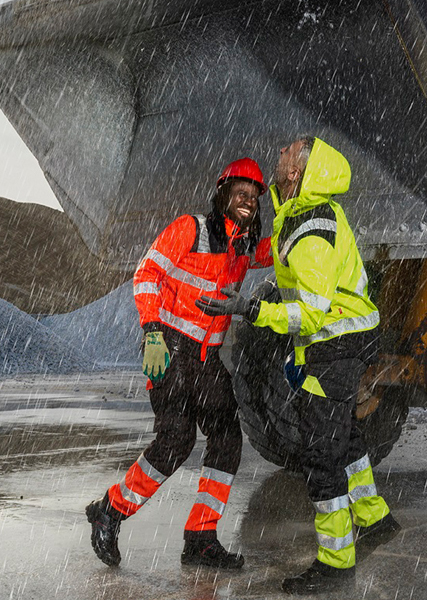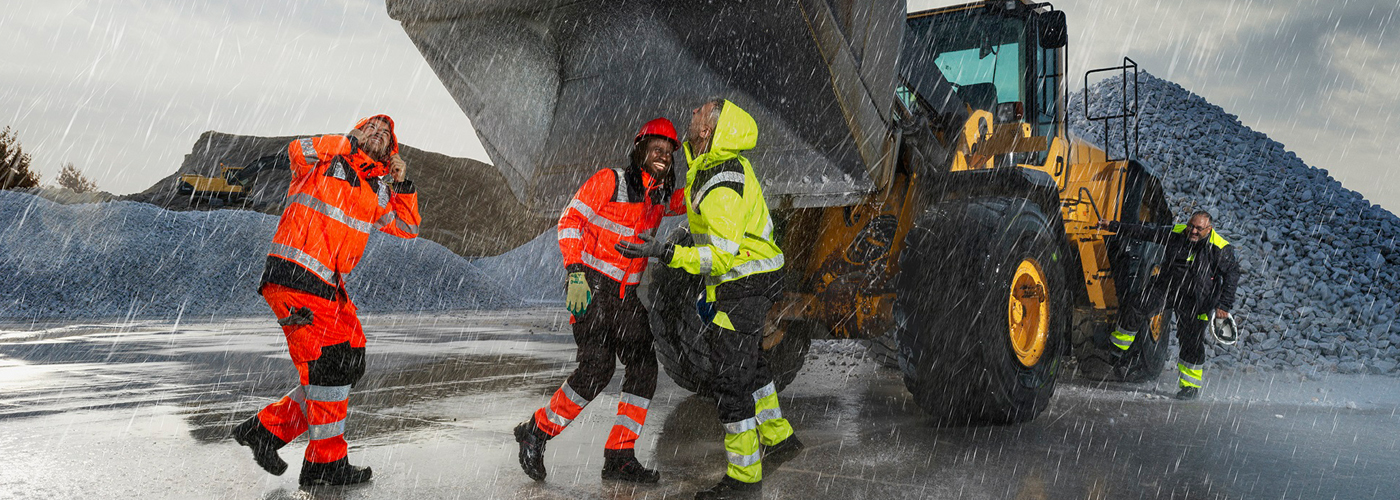
Bad weather doesn't exist - Blog
... but bad clothing does! The importance of appropriate protective clothing for working in cold, wind and rain.
Published: Tuesday, October 1, 2024

Working in cold, wet and windy conditions requires more than just a thick jacket. The right clothing not only protects you from the elements, but also keeps you comfortable and productive. Protective clothing must meet specific requirements to be effective, especially when it comes to waterproofing, insulation and breathability. In this blog, we discuss what to look out for when choosing the right workwear for extreme weather conditions, including the relevant certifications.
Waterproofing and certifications
One of the most important factors when working in rainy conditions is waterproofing. Clothing that lets water through can quickly lead to hypothermia and discomfort. It is therefore essential to choose waterproof clothing that meets official standards and certifications. In Europe, the EN 343 certification, which classifies protective clothing based on waterproofness and breathability, is widely used.
Clothing that meets the EN 343 standard is tested for water permeability and breathability. It is important that clothing not only keeps water out, but is also breathable, allowing moisture and sweat to escape from inside. This prevents you from getting wet and cold from sweat, which is often a problem with non-breathable materials.
Fabrics and fabrics: protection against wind and cold
Cold and wind are often as challenging as rain. Many windproof garments use synthetic materials such as polyester, which blocks wind effectively. There are also fabrics such as softshell and hardshell, which are both wind- and waterproof, yet remain breathable. These materials use special membranes that allow moisture to escape from inside to outside, while keeping water and wind out.
A popular choice for insulation against the cold is fleece, a synthetic material known for its warmth and breathability. Although fleece itself does not have waterproof properties, it works extremely well in combination with a waterproof outer layer. Fleece holds air in its fibres, making it an excellent insulator against the cold, while at the same time providing ventilation. This allows your body temperature to remain well regulated without overheating or accumulating sweat.
Breathability: staying dry from the inside out
A major problem when wearing thick, protective clothing is the accumulation of sweat. This can lead to feeling wet and cold inside, even if you are protected from rain. Fabrics with high breathability, such as Gore-Tex, allow sweat to escape effectively. This keeps you dry and warm, without dampening your clothing from the inside out.
Breathable fabrics are essential for prolonged physical work in cold conditions, as they promote the evaporation of sweat. This reduces the risk of cooling due to moisture accumulation in the clothing, contributing to a stable and comfortable body climate.
Conclusion
When working in cold, wet and windy conditions, choosing the right protective clothing is crucial for comfort and safety. Make sure your clothing is waterproof and complies with certifications such as EN 343. It is also important that clothing is breathable to wick away sweat and moisture from the inside. Fabrics like fleece offer excellent insulation against the cold, while materials like softshell and Gore-Tex offer protection against both rain and wind, without compromising on breathability.
The right combination of waterproof, windproof and breathable clothing will keep you dry, warm and comfortable, even in the most challenging weather conditions.
